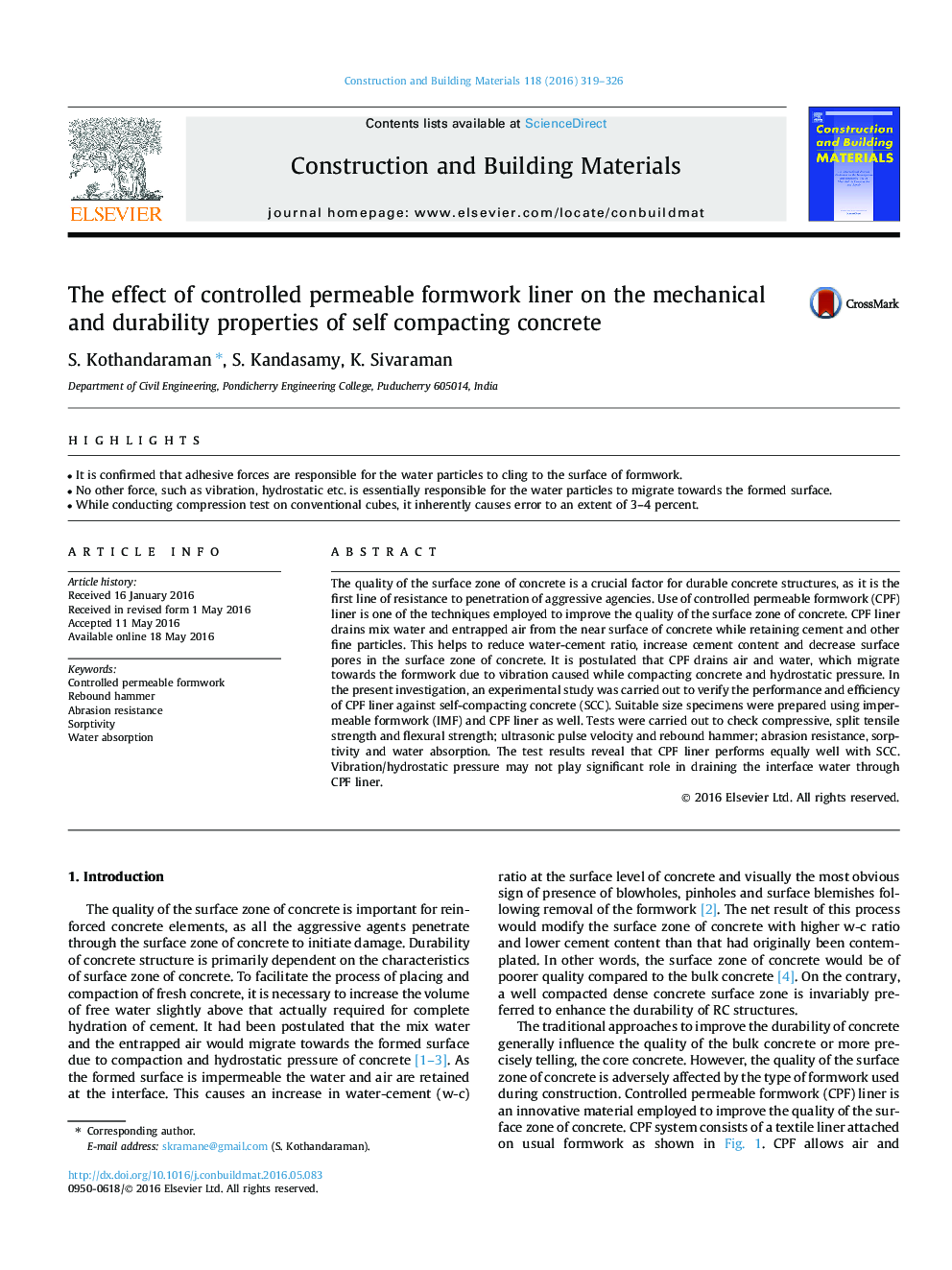| Article ID | Journal | Published Year | Pages | File Type |
|---|---|---|---|---|
| 255908 | Construction and Building Materials | 2016 | 8 Pages |
•It is confirmed that adhesive forces are responsible for the water particles to cling to the surface of formwork.•No other force, such as vibration, hydrostatic etc. is essentially responsible for the water particles to migrate towards the formed surface.•While conducting compression test on conventional cubes, it inherently causes error to an extent of 3–4 percent.
The quality of the surface zone of concrete is a crucial factor for durable concrete structures, as it is the first line of resistance to penetration of aggressive agencies. Use of controlled permeable formwork (CPF) liner is one of the techniques employed to improve the quality of the surface zone of concrete. CPF liner drains mix water and entrapped air from the near surface of concrete while retaining cement and other fine particles. This helps to reduce water-cement ratio, increase cement content and decrease surface pores in the surface zone of concrete. It is postulated that CPF drains air and water, which migrate towards the formwork due to vibration caused while compacting concrete and hydrostatic pressure. In the present investigation, an experimental study was carried out to verify the performance and efficiency of CPF liner against self-compacting concrete (SCC). Suitable size specimens were prepared using impermeable formwork (IMF) and CPF liner as well. Tests were carried out to check compressive, split tensile strength and flexural strength; ultrasonic pulse velocity and rebound hammer; abrasion resistance, sorptivity and water absorption. The test results reveal that CPF liner performs equally well with SCC. Vibration/hydrostatic pressure may not play significant role in draining the interface water through CPF liner.
